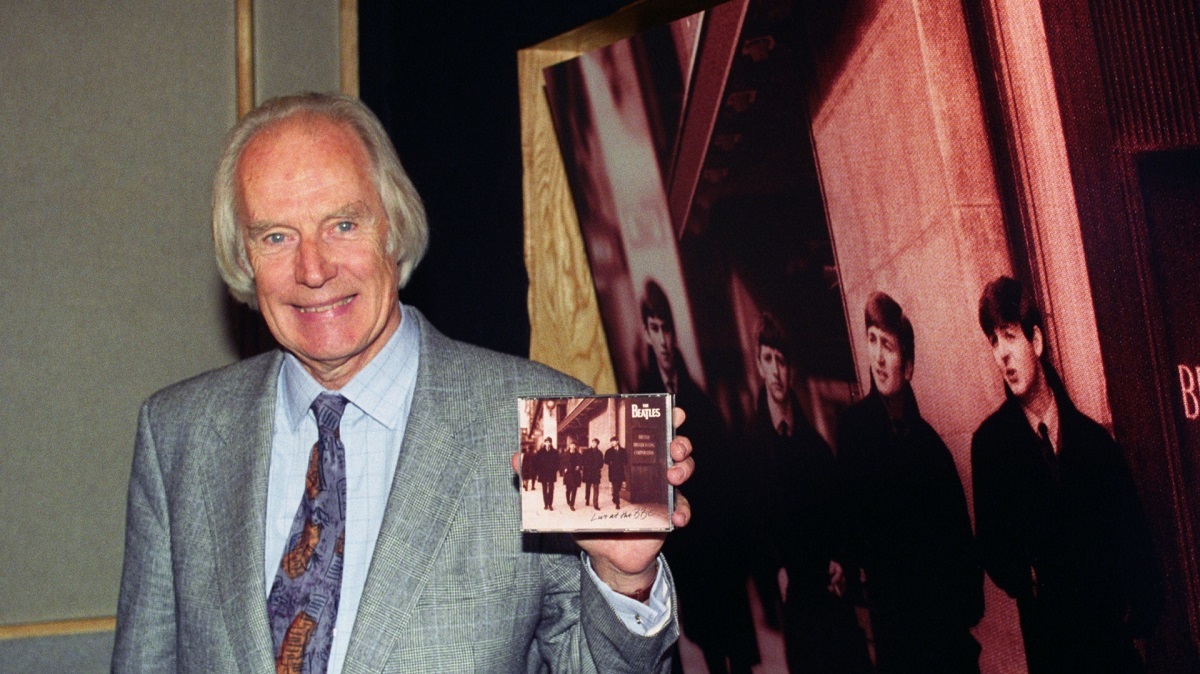
It was a long-awaited and fateful encounter which changed popular culture – and the world – forever.
On June 6 1962, The Beatles entered Abbey Road studios – which would become their recording hub for years – for the first time to have their debut meeting with Sir George Martin.
Not only did they hit it off, with the band impressed by the dapper record executive’s pedigree as a comedy producer, but they did enough to secure their Parlophone deal. Beatlemania, riches and a musical revolution were to follow.
But for the group it must have felt like the last roll of the dice. They had already been rejected by other EMI-owned labels and their encounter with Sir George had already been three months in the making.
John Lennon, Paul McCartney, George Harrison and then drummer Pete Best had already been stung by rejection after being summoned to London to try out for Decca on the recommendation of a company junior who had seen them at Liverpool’s Cavern Club.
But when the band arrived for their date in the studio on New Year’s Day, they were already jaded from a 10-hour van drive as a result of roadie Neil Aspinall losing his way.
They rattled through 15 songs on their battered equipment, before being hustled out of the West Hampstead studio to make way for an audition by Brian Poole And The Tremeloes.
Although days later the band had the delight of seeing their first record released – playing as the backing band to Tony Sheridan for his version of My Bonnie – the band soon had their bubble burst when Decca rejected a deal in early February.
One of the cited reasons was famously that “guitar groups are on the way out”, but it led the group’s manager Brian Epstein fuming that they would one day “be bigger than Elvis Presley” at a subsequent meeting with executives.
Undeterred, Epstein continued to tout the group, now with his Decca tapes in hand, but faced even more rejection.
It was a visit to the HMV shop in Oxford Street which set their eventual deal in motion.
Epstein called in to see a friend he had made on a retail management course, who suggested his tapes should be transferred to discs – to make it easier to hawk the songs around. The shop engineer was so impressed he called down a music publisher from the top floor office, who in turn, made a call to Sir George’s secretary to recommend a meeting with Epstein.
A few days later on February 13, Epstein visited the record label HQ within EMI’s Manchester Square office in London, at which Sir George heard the disc and spotted some potential and showed interest in meeting the band.
All went quiet for three months until manager and exec met again and unusually a contract was drawn up before even meeting the band, apparently to make the process quicker if he gave a deal the go-ahead at a later audition.
When the eventual session at Abbey Road took place, the band recorded four tracks – Besame Mucho and three original songs, PS I Love You, Love Me Do and Ask Me Why. Sir George had left the session in the hands of assistant Ron Richards but was summoned from the canteen after the deputy was impressed by Love Me Do, and he spent of the remainder of the session on hand.
As they listened back to the tape, their soon-to-be label boss said they had to speak up if there was anything with which they were unhappy, to which Harrison is famously said to have replied: “For a start, I don’t like your tie.”
After the session he thought about whether the line-up needed tinkering to a more conventional single singer format, instead of both McCartney and Lennon sharing duties, eventually opting to leave things as they were.
Sir George eventually opted to sign them after deciding he had “nothing to lose”, although the contract left them with a piffling royalty which was heavily weighted in favour of enriching the label rather than the band, which in later years left them embittered and much more protective of their output.
By September 4, joined by a new drummer Ringo Starr, they were back at Abbey Road to record their first single Love Me Do (although Starr was actually replaced by session man Alan White for the track).
Sir George Martin, who became known as the ‘Fifth Beatle’, died peacefully at his home. He was 90.
READ MORE

Enjoy the convenience of having The Sunday Post delivered as a digital ePaper straight to your smartphone, tablet or computer.
Subscribe for only £5.49 a month and enjoy all the benefits of the printed paper as a digital replica.
Subscribe




